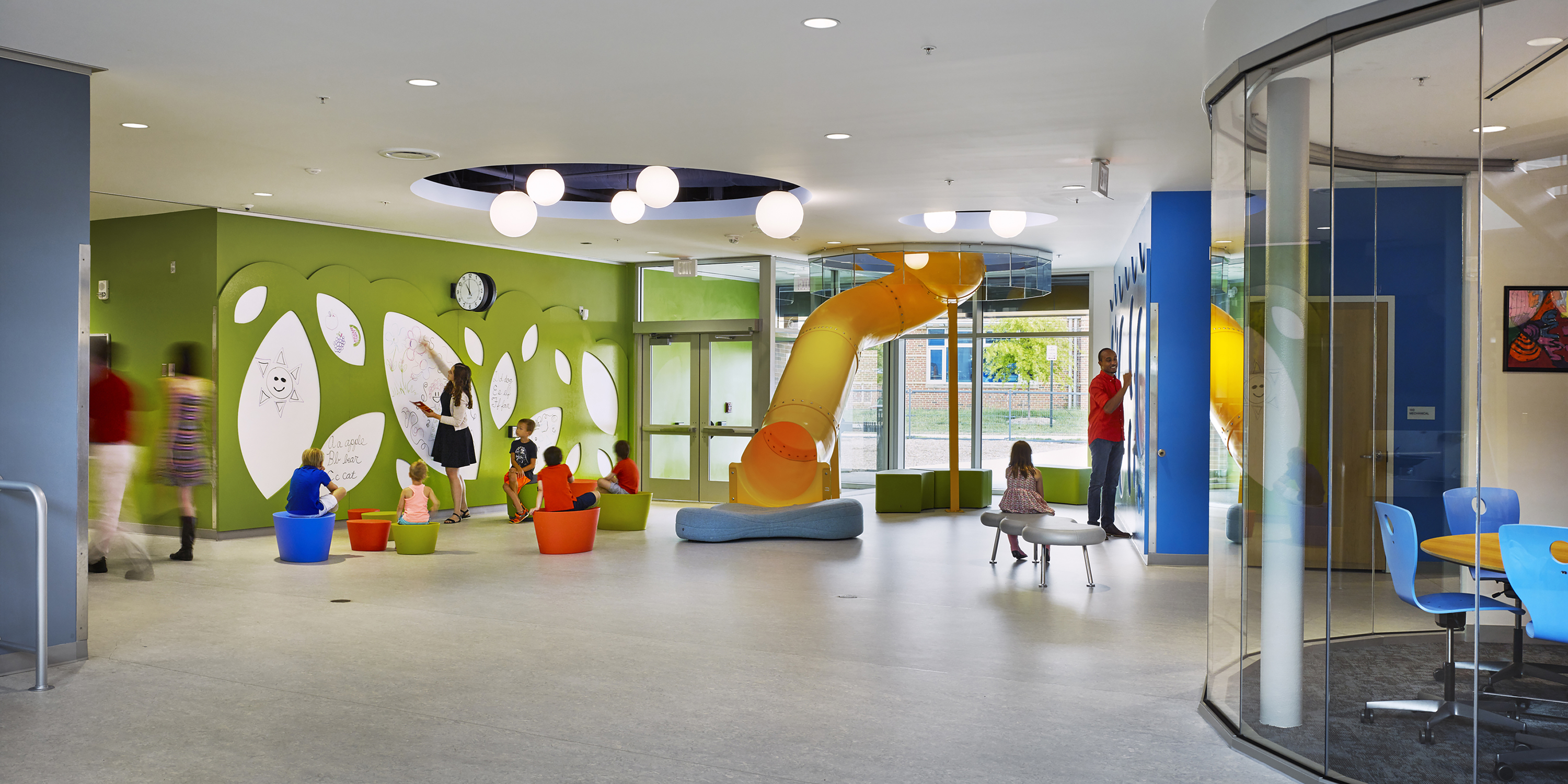
Schools can transform communities
We believe that our schools should be models of sustainability. They should show first-hand the solutions that are going to bring us forward into a healthy, sustainable future and inspire students to invent things we can’t even imagine.
What’s more, we believe that schools inspire not only their students and teachers but also their entire community. As centers of community, schools impact how people perceive their neighbors, institutions, and their shared future.
School facilities directly impact student learning, student and staff health, and school finances on a huge scale. Globally, 1 in 8 individuals set foot in a school every day. Today, there are nearly 100,000 public schools in the United States. In fact, state and local governments invest more capital in K–12 public school facilities than in any other infrastructure sector outside of transportation. However, with an estimated 7.5 billion square feet in the U.S. to manage and a shortage of around $85 billion per year in necessary investment, our schools are falling behind, particularly those most in need. U.S. students and teachers deserve healthy, inspiring, high-performance, and modern school buildings, and we can make it happen.
What is a green school?
A green school is about more than curriculum and more than bricks and mortar. It’s a school where the community works together to support global sustainability and climate action. A green school prepares students to lead the world toward a healthier, cleaner, more sustainable future.
Green schools are better
Successful green schools are better for students, teachers, and communities, as demonstrated through research and on-the-ground experience. Learn more about the benefits of green schools for your students and community.
Three pillars of a green school
The Whole School Sustainability framework explains that, in green schools, the educational program, physical place and organizational culture all support sustainability, and that each aspect of the school plays an important part in making the whole picture work.
While the Whole School Sustainability framework describes what a green school looks like, the three pillars of a green school explain how to measure progress. The three pillars were first introduced in 2011 when the U.S. Department of Education launched the ED-Green Ribbon Schools award program. Since then, organizations all over the world have adopted the measurement framework that they present.
Reduce environmental impacts and costs. Green schools reduce their environmental impact and fight climate change by reducing energy and water use, cutting back on fossil fuel used in transportation, reducing waste headed to landfill, and protecting natural habitats.
- We know that schools that prepare for climate impacts and/or are designed to be climate resilient can keep or return students during adverse climate events like power outages, poor air quality days, and severe storms.
- We know that pursuing third-party certification like LEED to verify achievement of green goals can have measurable impact on reducing resource usage.
- We know that cutting energy usage in buildings reduces energy load on power plants, reducing carbon emissions and other environmental impacts of power generation.
- We know that cutting water usage in buildings reduces aquifer depletion, protects freshwater habitats and reduces the energy used to treat and transport water.
- We know that reducing waste going to landfill saves open land for habitat and other purposes and reduces water and soil contamination. We also know that stating the goal to reduce landfill waste encourages direct reuse and puts more material in the recycling stream.
- We know that reducing car trips made by a single rider cuts back on carbon emissions from transportation. We also know that electric school buses cut down on harmful pollution that can impact students' health and performance.
- We know that electric school buses cut down on harmful pollution that can impact students' health and performance.
Improve occupants' health and performance. Green schools protect student and teacher health by ensuring a clean and healthy indoor environment in the school, as well as providing programs and services for good nutrition and physical activity.
- We know that specific aspects of indoor air quality (IAQ)—such as the amount of CO2, VOCs, particulates and humidity in the air—have demonstrable impacts on student learning and human health more generally. Explore more research about the impact of the indoor environment on student health in our School Health Research Library.
- We know that access to clean and safe drinking water can increase water intake, which benefits overall health. We also know that water that is not clean and safe—particularly water that is contaminated with lead—has demonstrable impacts on cognitive development, attention and behavior, as well as a variety of impacts on physical health.
- We know that exposure to daylight affects the production of important hormones that impact alertness and sleep/wake cycles.
- We know that increasing the number of servings of whole grains, fruit, and vegetables that students eat has positive impacts on their health, well-being and ability to learn.
- We know that increasing the amount of physically active time that each student experiences during the school day can cut obesity rates and encourage positive lifetime habits.
Effective sustainability education. Green schools teach students about sustainability and the environment, providing tools to solve global challenges and using the school as a teaching tool. Green schools support sustainability literacy through curriculum and instructional practices.
- We know that increasing students’ environmental knowledge while also employing instructional practices that focus on interdisciplinary and place-based problem solving can influence behavior change toward sustainability.
- We know that students for whom the environment is a context for learning perform better on measures of general academic performance.
- We know that educating students about the reality of climate change prepares them for today's jobs, increases our national security, and helps our communities' readiness for climate impacts.



